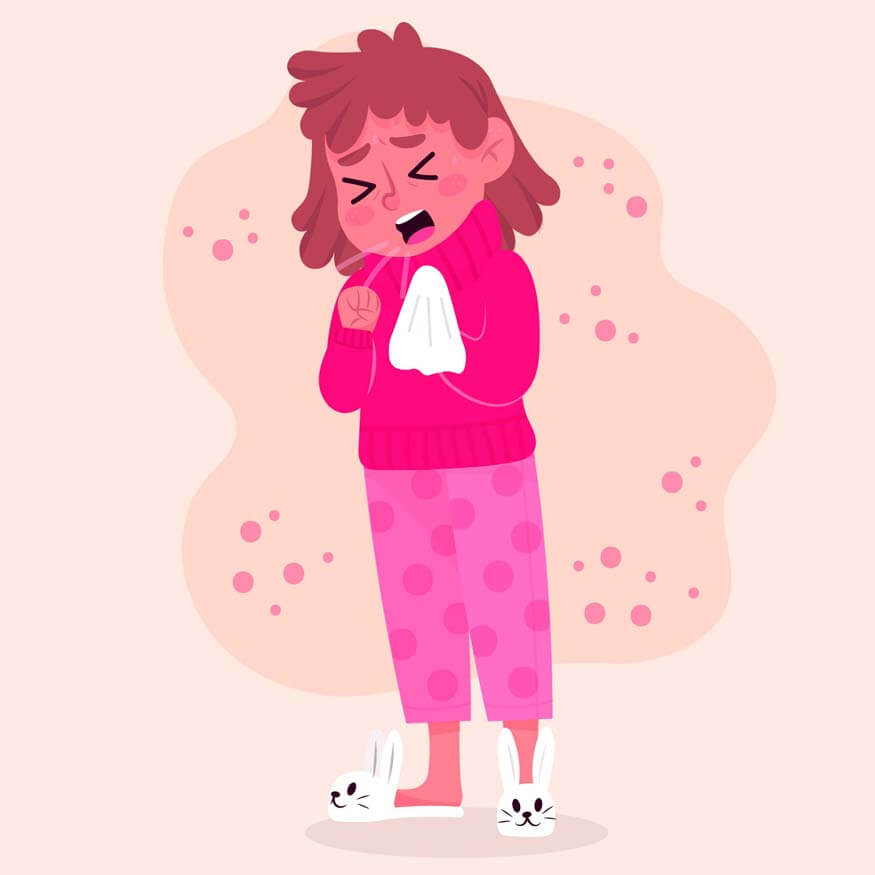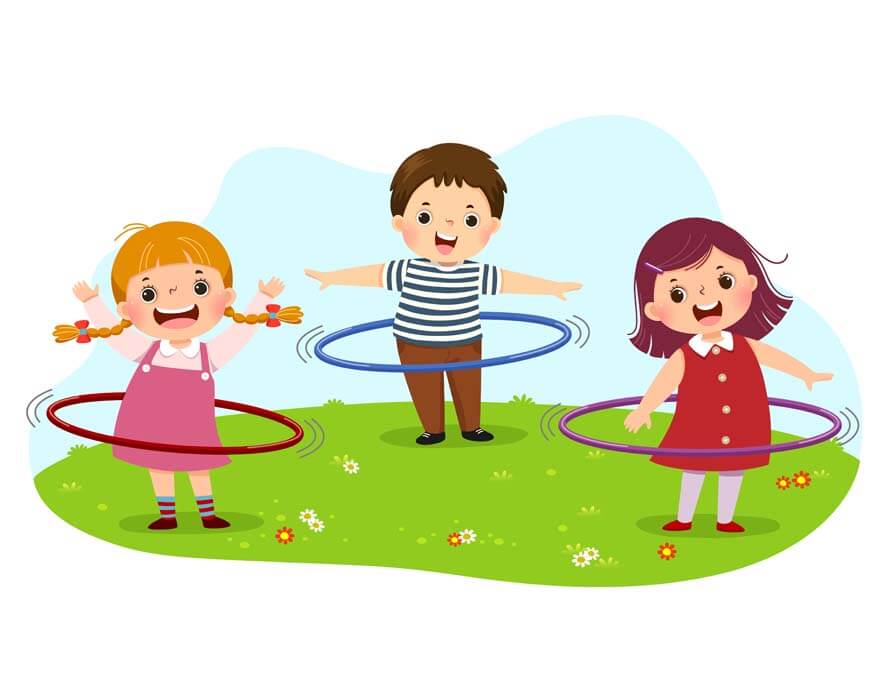If your child develops a wet cough that lasts for a few weeks, they may have acute bronchitis. The disease typically stems from a virus and recovers quickly on its own.
Rarely, bronchitis in children can result in the emergence of a chronic condition that can last a month or longer. Medication can be used to manage the common bacterial infection known as chronic bronchitis.
Bronchitis causes inflammation of the medium and large airways in the lungs, which commonly causes a cough that sounds moist. Viruses frequently cause acute illness, which has a limited lifespan.
Since doctors do not typically use this term to describe illness in youngsters which can lead to bronchitis treatment, you might not hear your doctor refer to such a situation as “acute bronchitis.” Because the virus that produces the cough typically goes gone after two to three weeks along with other symptoms, the child will typically not need to see a doctor for acute bronchitis. What is medically acute bronchitis is frequently referred to by parents as a chest cold.
Also Read: Iron-Deficiency in children: Causes, Symptoms and Prevention
What causes childhood acute bronchitis?
Viral infections are most frequently to blame for acute bronchitis resulting from acute bronchitis treatment. Bacteria or other elements like dust, allergies, potent odours, or tobacco smoke may also be to blame.
A virus is the most frequent cause of acute bronchitis in children. After a viral infection of the nose, mouth, or throat (upper respiratory tract), the sickness may appear. These diseases are easily contagious when near a sick individual.
Which kids are most susceptible to severe bronchitis?
Children who have the following conditions are more likely to get acute bronchitis treatment.
- Persistent sinusitis
- Allergies
- Asthma
- The adenoids and tonsils are larger
- Exposure to passive smoking
- Possess additional, grave medical problems
What signs might a young child have of acute bronchitis?
The most typical signs are as follows:
- Coughing up mucus or being dry
- Gagging or throwing up
- Runny nose, often before the onset of a cough
- Chest pain or congestion
- A generalised pain or unwell feeling
- Chills
- Mild fever
- Muscle and back discomfort
- Wheezing
- Unwell throat
Typically, these symptoms last 7 to 14 days (about 2 weeks) resulting bronchitis medication. However, the cough could last for 3 to 4 weeks. These signs could resemble those of other medical conditions.
Also Read: Respiratory Rate in Children by ages: What is normal, How to stabilise Respiratory Rate
How is paediatric acute bronchitis identified?
The doctor who treats your child with bronchitis medication can frequently identify acute bronchitis through a physical examination and review of medical history. To rule out conditions like pneumonia or asthma, your child may occasionally need tests to rule out other health issues. These tests could consist of:
A chest X-ray. Images of internal organs, bones, and tissues are produced during this procedure.
Oximetry through pulse: A tiny instrument called an oximeter gauges the blood’s oxygen content. The medical professional attaches a tiny sensor (like a clip) to your child’s finger or toe for this test. The sensor emits a tiny red light when the device is turned on. The red light does not get hot, and the sensor is painless.
Sputum and nasal discharge samples: These tests can find the germ causing an infection.
Also Read: Common Skin Infections In Children: Symptoms and Treatment
Lifestyle and home remedies for adults to protect their children from Bronchitis
To help you feel better about your kid’s safety, you may want to try the following self-care measures:
Avoid lung irritants. Don’t smoke. Wear a mask when the air is polluted or if you are exposed to irritants, such as paint or household cleaners with strong fumes to avoid Bronchitis medication.
Use a humidifier. Warm, moist air helps relieve coughs and loosens mucus in your airways. But be sure to clean the humidifier according to the manufacturer’s recommendations to avoid the growth of bacteria and fungi in the water container and to avoid Bronchitis medication.
Consider wearing a face mask outside. If cold air aggravates your cough and causes shortness of breath, put on a cold-air face mask before you go outside to keep Bronchitis medication away from your kids.
At Home Bronchitis treatment
Allowing your youngster to unwind as much as you will likely aid their recovery if they have bronchitis. To manage bronchitis, patients must miss work or childcare while their symptoms persist. Bronchitis treatment can be done at home.
It will be simpler to cough up and expel mucus once it begins to loosen in their bronchi. Try the following to expedite the treatment for bronchitis and relieve discomfort:
– Administering nasal drops or a spray of saline
– Using a cool-mist humidifier
– Having your child breathe in steam (e.g., have them sit in the bathroom with the shower running)
– Providing them with plenty of liquids, like water or broth
Acute Bronchitis Treatment
- Your objectives for the visit and the reason you are there should be understood.
- A list of the questions you want answered before your visit should be made.
- Any new diagnoses, medications, treatments, or tests that were performed at the appointment should be written down. Any new advice for your child provided by your provider should also be noted.
- The benefits of any new medications or treatments prescribed for your child should be understood. Also, any potential negative effects should be noted.
- Any other options for treating your child’s condition should be seen if there are.
- The potential meaning of the results from a test or operation should be understood before undergoing it.
- What to expect if the medication, test, or operation is refused by your child should be understood.
- Antihistamines also shouldn’t typically be distributed. The secretions can be made to stop secreting. That might aggravate the cough.
The best antibiotic for chest infection is amoxicillin (a type of penicillin). If you are allergic to amoxicillin, alternatives can be used like clarithromycin or doxycycline. The best antibiotic for chest infection prescribed by the best doctors only should be given to your children.
Never feed an infant, kid, or teen aspirin. Reye syndrome is an uncommon yet severe disorder that it might lead to. This illness is uncommon yet extremely dangerous. It typically has liver and brain effects.
Also Read: Sore Throat in Children: Causes, symptoms, treatment
Conclusion
While your child’s cough may sound bothersome and worrisome, Euroschool wants to remind parents that acute bronchitis, whether bacterial or viral, typically goes away on its own without the need for medical attention. Try your best to keep your child cosy and well-hydrated. Any odd symptoms or warning indications, such as a high temperature or blood in the mucus, should be brought up with their paediatrician. Work with your child’s doctor to rule out any potential chronic illnesses if they experience bronchitis frequently.
A physical examination and a review of your child’s medical history can frequently identify acute bronchitis and prescribe the best antibiotic for chest infection in children. To rule out conditions like pneumonia or asthma, your child may occasionally need tests. Chest X-rays may be among these tests. Children learn caution and strength in Euroschool.











